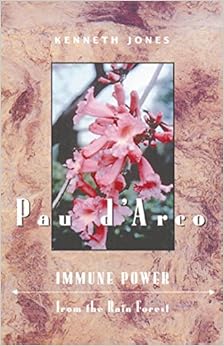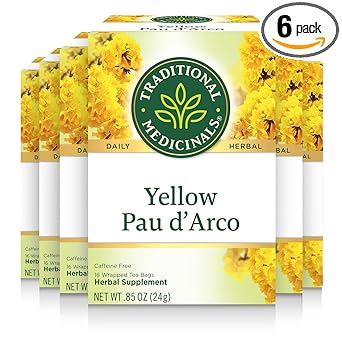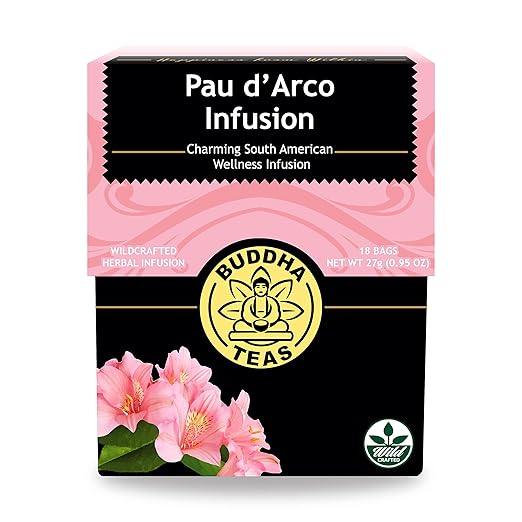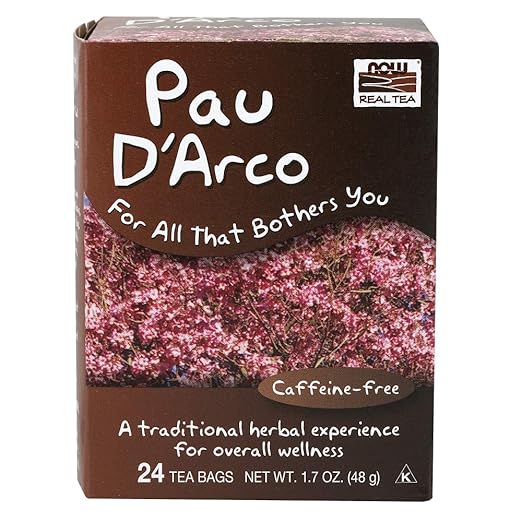Because of my and many others’ autoimmune condition(s) I am always alerted to find a product that can help. Pau D’arco is one of those herbs that can help. Making that herb into a hot beverage that we will refer to as tea, is even better.

This tea was brought to my attention and is high in several nutritional qualities that can help us in our battle. Our battle with auto-immune as well as with the other numerous health benefits. Detoxing is one of the most total benefits a body can receive.
As the most complete chronicle of the science and folklore of pau d’arco, this book will serve as an invaluable resource for herbalists, scientists, and anyone interested in medicines from the rain forests of South America
Because I’m a tea lover I love when the product that can help me is tea. This however is not a tea because it does not come from the Camilla Sinesis plant. This is an herb that we infuse in hot water and generally refer to as tea.
I hope one day we can learn to separate the two (teas and herbs), in all honestly I love the idea of an herbal drink (tisane) that is medicinal and can help those that suffer from many different facets of an autoimmune disease.
The Yerba Maté provides hundreds of nutrients to nourish the body and support its well-being.
Skillfully hand-harvested by Paraguayan experts, the inner bark of the Purple Lapacho tree
What is Pau D’arco
Pau d’arco is an evergreen, canopy tree that can grow up to 124 feet high, and the base of the tree can be 6-9 feet in diameter. It is indigenous to the Amazon rainforest and throughout Central and South America.
Pau d’arco means bow tree in Portuguese and is named because it is used by the native people of Brazil to make bows and arrows.
While the tree is also known as taheebo and ipé roxo. It’s the inner bark that can be made into a tea called lapacho. The lapacho and also the beta lapachone are chemical compounds named naphthoquinones that seem to have the biggest support for antifungal, antibacterial, and antiviral attacks on the body.
Dr. Joaquin Almeida Pinto around 1873 began describing pau d’arco for many of its therapeutic properties. As a doctor, he prescribed it as a fever reducer and the bark of the pau d’arco was used against ulcers. Dr. Pinto also used it for venereal, rheumatic, and skin disorders. There were also some noted usages of the pau d’arco bark prior to the 13th century.
Taste: Floral and foresty with soft tannins. Plant Story: Shamans and medicine people of South America have used the inner bark of the flowering pau d’arco tree for generations.
The fighting chemical compounds of Pau D’arco
Naphthoquinones and Lapachol – can kill bacteria, fungi, viruses, and parasites
Quinones, Benzenoids, and Flavonoids – biologically activity against harmful organisms
Selenium – increases immunity, defends the body against radical damage, fights inflammation
Buddha Teas searches the world for herbs, flowers, spices, and teas to incorporate into our blended and single herb wellness products. We never use additives or “natural” flavorings. Instead, we use substantial quantities of key ingredients to ensure our products have optimal efficacy.
The benefits of Pau D’arco Tea
- Reduces Pain – By reducing inflammation the cause of some pain, the pain can be reduced.
- Fights Candida – Candida normally starts in the mouth and caused the PH levels of the body to become unbalanced. Pau D’arco helps balance that PH.
- Reduces Inflammation – Pau d’arco may help fight inflammation, according to a study published in the Journal of Ethnopharmacology.
- Heals Ulcers – a study involving rodents evaluated the gastric ulcer healing property of the ethanolic extract (EET) of bark from pau d’arco
- Fights Cancer – the effects of taheebo as we mentioned above is known for its ability to fight cancer and relieve pain associated with cancer
- Antiviral and Anti-fungal properties – The naphthoquinones of pau d’arco, in particular lapachol, have been stated to be active against certain viral strains including herpes virus types I and II, influenza, poliovirus, and vesicular stomatitis virus
- Detoxes the body – Pau d’arco has strong cleansing properties, mostly loosening the bowels. Helping to aid digestion and regularity.
A Traditional Herbal Experience, Overall Wellness, Premium Unbleached Tea Bags
Cautions
Pau d’Arco has been used for centuries in the Amazon rainforest. Benefits seen in this article there have been studies over study as well as personal research. Pau D’arco is considered safe while used in moderation to treat many diseases and complications.
However, there are some precautions to consider when taking pau d’arco, especially in high doses.
- Do not use it on children and infants
- Caution if you are pregnant or nursing
- Thins the blood
Consult your physician prior to use
Conclusion
The number of studies that have been conducted with the use of pau d’arco are numerous. Many were done on mice or rabbits with wonderful conclusions. There is a lack of studies done on humans leaving the decisions and conclusions of the health benefits of pau d’arco through research and personal experience. One of the best articles I found while researching pau d’arco is this book
As the most complete chronicle of the science and folklore of pau d’arco, this book will serve as an invaluable resource for herbalists, scientists, and anyone interested in medicines from the rain forests of South America






